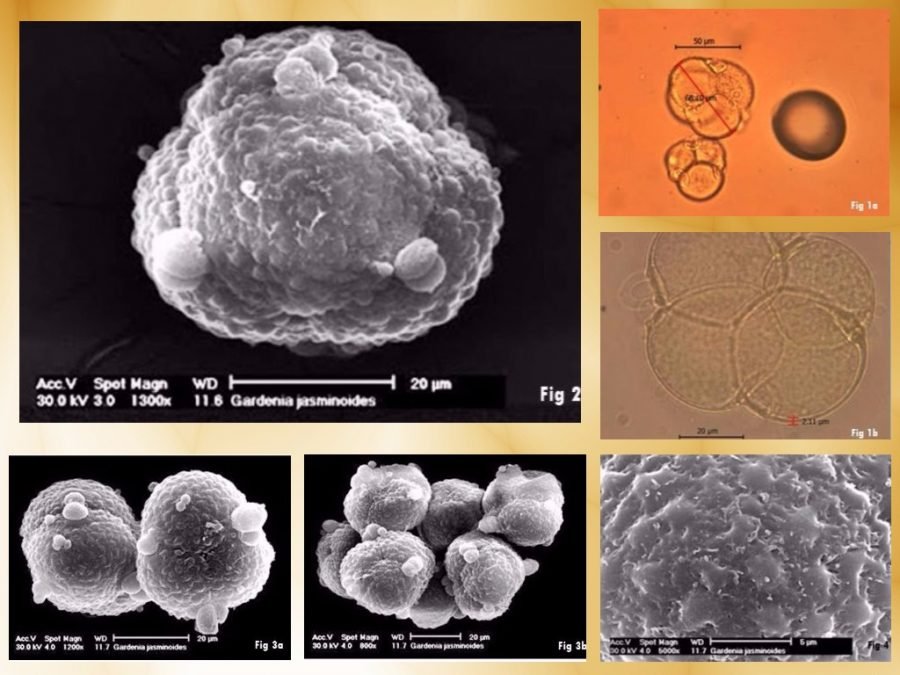
Gardenia jasminoides known as ‘bunga kaca piring’ among Indonesian people. It has white petals and an unique sweet fragrance. I studied Palynology for thefirst time with Dr Noraini, a lecturer from Universiti Kebangsaan Malaysia (UKM), as my teacher.
Palynology is the study of plant pollen, spores and certain microscopic plankton organisms (collectively termed palynomorphs) in both living and fossil form (Williams, 1994). Botanists use living pollen and spores (actuopalynology) in the study of plant relationships and evolution, while geologists (palynologists) may use fossil pollen and spores (paleopalynology) to study past environments, stratigraphy (the analysis of strata or layered rock) historical geology and paleontology ( Jarzen & McAllister, 1994).
There are two methods to see pollen and spores. We can use Scanning Electron Microscope (SEM) and Light Microscope (LM) to get clear view of pollen/spore’s structure. Noraini let her students to pick a certain flower as they wished to observe and I choosed Gardenia.
Botanical Introduction

Observation
I studied this flower under the SEM to know its size, types, colpus and granule, the exine ornamentation and its aperture. I also used LM to know its size and types. The results I got could be seen in the following images.
LM Obsevation
We found that Gardenia’s pollen grains were circular-oblate shaped, member of tetrahedral tetrads class, and 2.11 micrometers exine’s thickness (Fig 1a and Fig 1b).
SEM Observation
Fig 2 gave us more clear view of Gardenia’s pollen and its tetrahedral tetrads’s characteristics. The next images (Fig 3a and Fig 3b) allowed us to see pollen’s shape from two different views, the equatorial and the polar view. Both views showed us similar looks that made its shape classified as circular-oblate.
The last image (Fig 4) presented exine’s ornamentation of pollen grains which were foveolate, rugulate, and perforate.
Summary
There are some characteristics we can use to compose pollen description. They are pollen class, pollen area index, the P/E and C/P length ratio, the shape of the pollen grain, the exine ornamentation, and the apperture (condition and peculiarities). Pollen grain of Gardenia jasminoides does n’t have pollen area index, P/E and C/P length ratio and apperture.